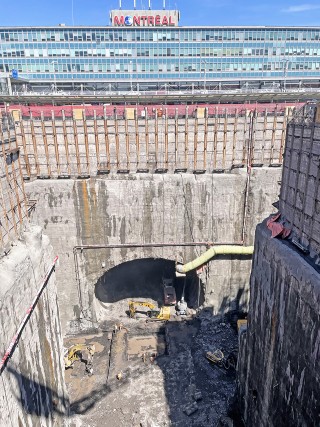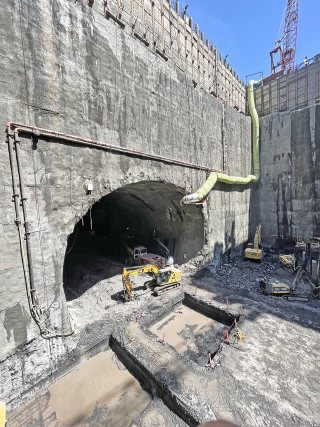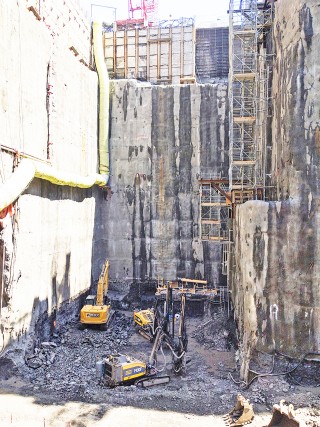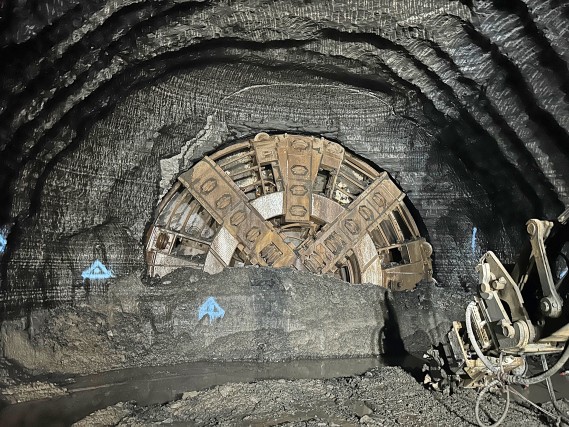REM station at the Montréal-Trudeau International Airport
The future REM station at YUL Montréal-Trudeau International Airport is an essential component of sustainable mobility: it will provide efficient and rapid transportation for passengers and the entire airport community, helping to reduce vehicle congestion in the vicinity of the airport.
Our firm has been working on the design of the station since 2017. In 2020 we began developing the architectural identity in collaboration with Saucier+Perrotte and executing construction drawings and specifications. That same year, Jodoin Lamarre Pratte architectes also took on the role of master designer–coordinator for the multidisciplinary team. Our architects are at the centre of this major project, responsible for both technical coordination and contractual matters. This dual role, rarely entrusted to an architectural firm for a project of this scale, highlights our rigorous management in combination with our already recognized expertise in design and construction supervision.
Location
Collaborating architects
Saucier+Perrotte architectes (concepteur signature)
Completion timeline (design and construction)
2017 — 2026
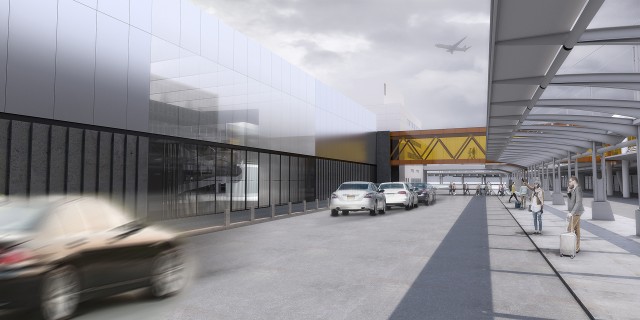
The station, the terminus of the A2 line that will connect the airport to the city, is situated underground with a ticketing hall above-ground that faces the arrivals and departures halls of the terminal. From the platforms to the ceiling of the hall above, the station interior will be 49 metre high. Since arriving at the airport represents a unique opportunity to offer visitors a memorable and pleasant experience, a spacious architecture has been developed for this signature project to accommodate large flows of passengers with their luggage during peak travel periods.
The architectural concept interprets the natural elements of the site, such as the geological and northern characteristics of Montréal. Although the station’s interior spaces are buried deep below ground, they are connected to the surface by light wells. These spaces therefore receive natural light during the day, which reflects off large white forms reminiscent of an iceberg. Passengers will use elevators to reach the second floor of the ticketing hall, where a glazed footbridge will connect them to the departures area of the airport.
Outside, the hall will act as a point of reference for the public. Thanks to its materiality and its architectural character—monolithic and mineral—it stands out while also blending harmoniously into the airport. At the street level, the hall is clad in stained concrete panels reminiscent of the bedrock from which the station emerges, while the upper level is clad in aluminum that reflects its surroundings. On the roof, 75 percent of the surface will be covered in vegetation.
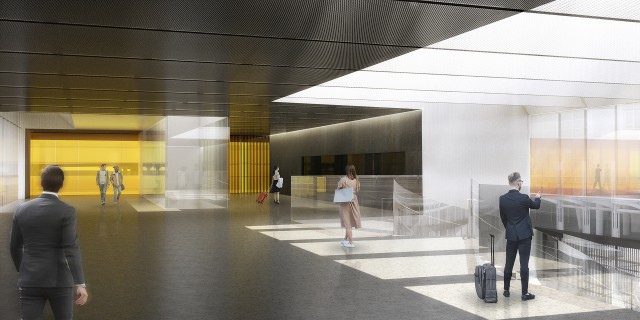
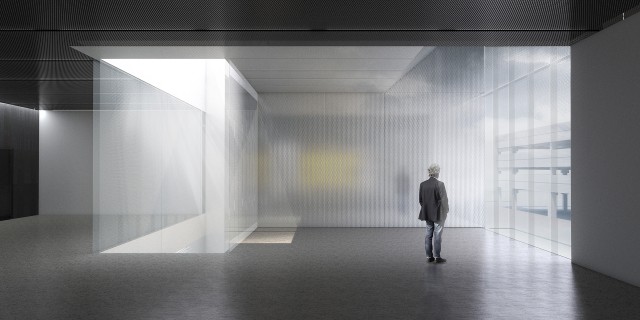
The project is part of a vast airport complex, and so its aesthetic, functional, and technical integration presents several challenges. Our team is working closely with the client and other professionals to ensure that the project is realized effectively and that it considers the unique conditions of an underground terminus station, on a site that operates 24 hours a day.
As specialists in transport and health architecture, the firm has developed expertise in studying and analyzing pedestrian flows to plan for effective spaces while designing its projects. Using modelling and simulation software, the fluid and safe circulation of users was planned based on a ridership forecast by ADM Aéroports de Montréal and CDPQ Infra and in compliance with applicable regulations.
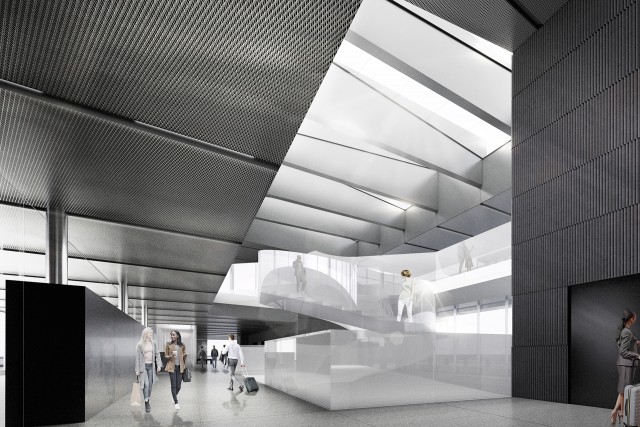
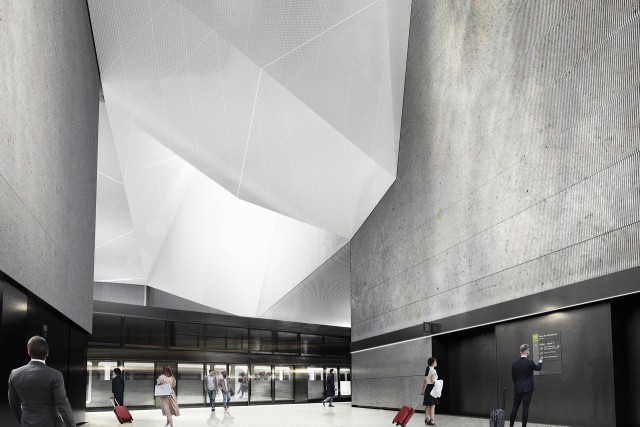
"This project will allow YUL to shine internationally and join the network of major airports that benefit from a sustainable and efficient link to their city centre. Although the pandemic has forced us to postpone many construction projects, we remain more convinced than ever of the importance of connecting the REM network to our site for the benefit of our travellers, employees and the community."
ADM President and CEO, 2017-2023

